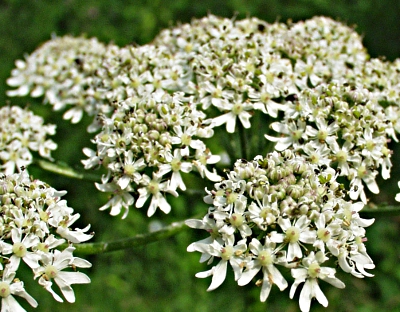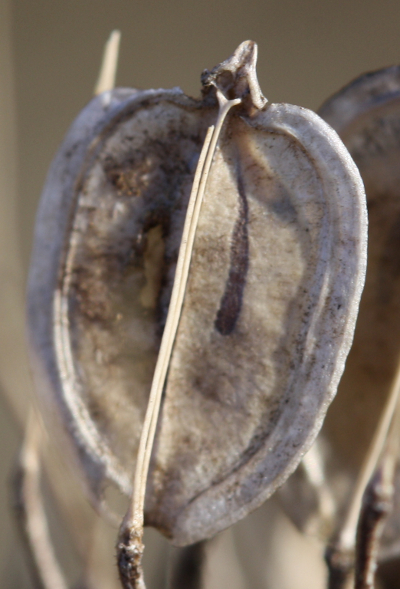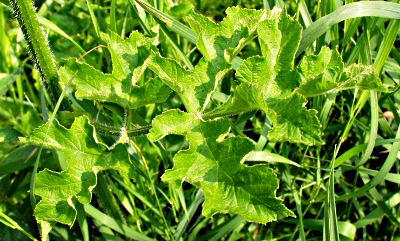Eltrot, common hogweed |



Flowers, mericarp and leaf of the eltrot
| Heracleum
sphondylium ssp. sphondylium L.: | |
| Blooming period: | June–Oktober |
| Height: | 50–140 cm |
| Flowers: | Ø 5–10 mm.bisexual or male, stamens: 5, styles: 2 |
| Petals: | 5, mostly white, the marginal ones enlarged |
| Calyx teeth: | 5, small, unequal in length |
| Stem leaves: | alternate, stalked, simply pinnate, leaflets lobed or pinnatipartite |
Plants biennial to short-lived, herbaceous, hairy, with strong, sometimes branched taproot.
Stem erect, strong, hollow, hairy, grooved, round, branched. Below the nodes not thickened.
Leaves alternate, stalked, hairy on both sides, simply imparipinnate with 3–7 lobed or pinnatifid leaflets. Margins crenated or toothed, petioles strongly widened at the base and sheathing the stem.
Inflorescence: double umbel; umbel flat to convex, with 6 to 25 tays, involucre usually missing.
Raylet leaves (involucel) 2–10, linear, directed downward. Umbellules with about 25 to 40 flowers.
Flowers of the terminal umbel hermaphrodite, the lateral inflorescences possess often both male and hermaphrodite flowers or exclusively male ones.
The marginal petals are enlarged. Petals white, rarely reddish or yellowish, notched to the halfway.
The two styles are at the fruiting time about 1.5 mm long and erect or slightly spreading.
The inferior ovary, constisting of 2 fused carpels, after insect pollination developed a 2-piece schizocarp.
Fruits 6–10 mm long, yellow-brown, obovate or almost round, mostly glabrous, strongly flattened, margins winged, 3 thin ribs on both sides, between them with dark brown, club-shaped oil tubes.In
addition to the subspecies described here, in Germany two other ones
occur:
1. Heracleum sphondylium ssp. glabrum
with greenish
flowers that are notched only about to 1/3 of length, the marginal
flowers are hardly enlarged.
2. Heracleum
sphondylium ssp.
elegans with
palmate leaves, which is found only in the mountains.
Heracleum mantegazzianum may hybridize with H. sphondylium but this happens very rarely.
| Floral formula mostly: |
| * K5 C5 A5 G(2) inferior |
Occurrence:
Ditches,
streams and rivers, on fertilized meadows and pastures. Prefers sunny,
slightly moist and very nitrogenous locations.
Distribution:
Eurasia
and North Africa.